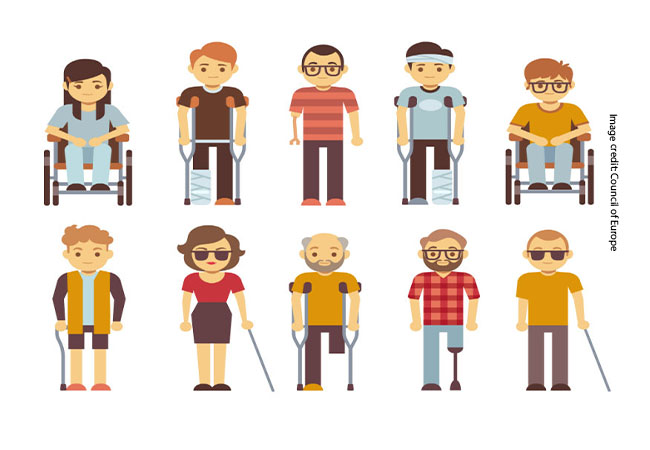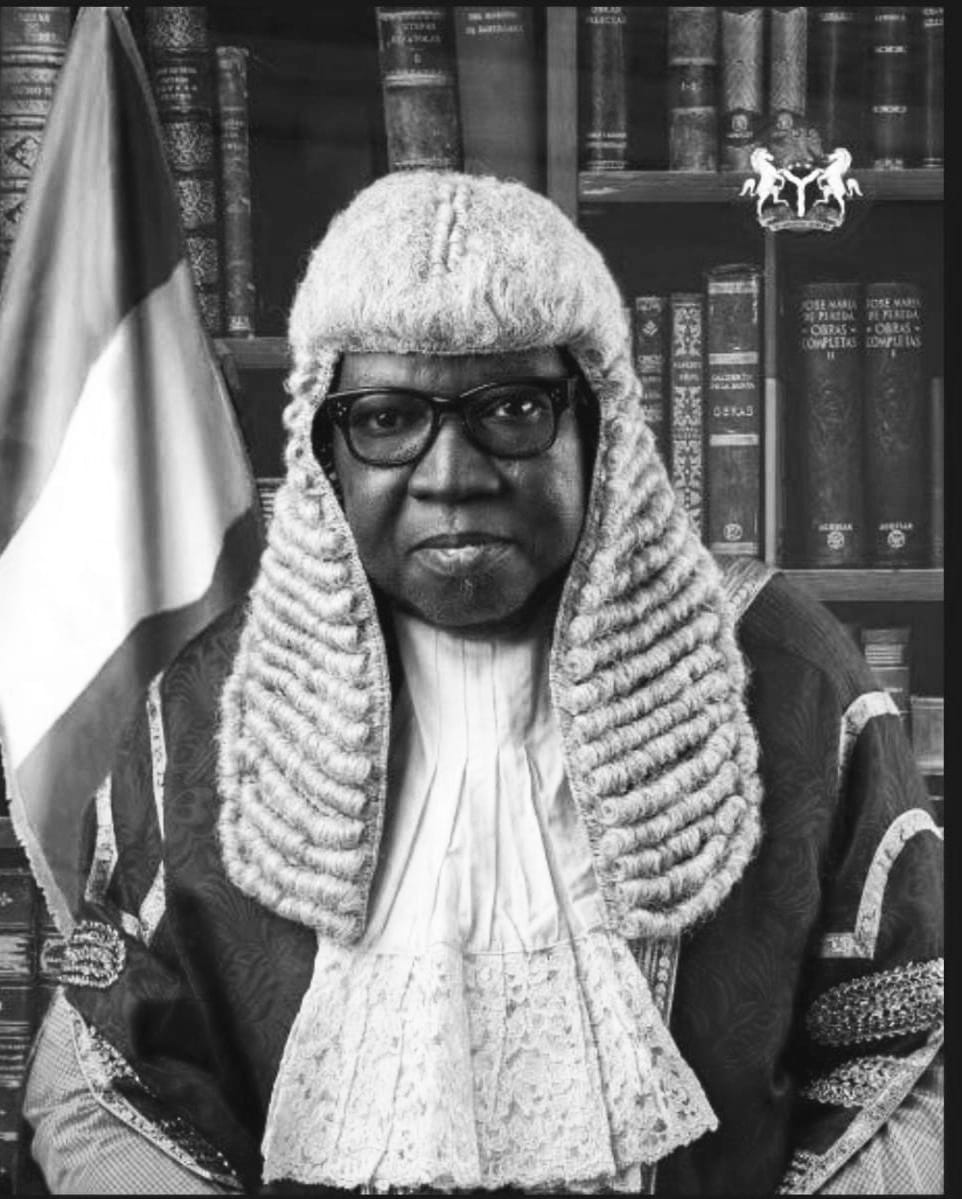Seven years after the passage of the disability law, it is clear that Abuja, the capital city of Nigeria, has not fully implemented the provisions of the law. One significant example of this failure is the lack of accessibility on pedestrian bridges, which are crucial for safe passage across major roads and highways. Ogbodo Ozioma Favour reports challenges faced by persons with special needs, especially in accessing pedestrian bridges built across major arteries.
In 2018, the Special Peoples Law, also known as the Discrimination Against Persons with Disabilities (Prohibition) Act, was signed in Nigeria to promote an inclusive society for people living with disabilities. This law required a five-year transitional period for public buildings, structures, or automobiles to be modified to be accessible to and usable by persons with disabilities, including those in wheelchairs.
However, years after the law was signed, it has been found that the capital city of Abuja has not fully implemented its policy on access to public facilities. Persons with mobility challenges, including those using wheelchairs, are left stranded and unable to access these vital pedestrian bridges.
On a sunny afternoon in January, the international airport highways leading towards the Wuye / Finance Bridge were bustling with activity as people hurried to their respective destinations amidst the sound of blaring vehicle horns.
At Kurchigoro bus Stop, along the airport road, pedestrians heading to the other side of the busy expressway quickly ascended the concrete pedestrian bridge to avoid the risk of being struck by fast-moving vehicles.
Similar scenes of mobility could be observed at other locations where such modern concrete bridges were constructed.
In developing countries, including Nigeria, one of the major concerns in road safety is the use of pedestrian bridges, which are structures built over highways to provide safer crossings for pedestrians.
In a bustling city like Abuja, commuting is already a challenging task for residents, and for people living with disabilities, it can be a series of difficult experiences.
Despite numbering around 27 million in Nigeria’s population of 206 million, reports indicate that Persons Living with Disabilities (PLWDs) are significantly disadvantaged and often excluded from critical decision-making processes and plans for social amenities by the government.
They are a marginalized segment of society, with their welfare rarely entering national discourse or public awareness. PLWDs encounter daily challenges of inclusiveness and accessibility, which greatly hinder their mobility.
In a bustling city like Abuja, they face a double jeopardy situation, either contending with intolerant drivers while crossing roads or struggling to navigate pedestrian bridges lacking assistive features.
Demographics of PLWDs:
The Centers for Disease Control and Prevention defines disability as any condition of the body or mind that makes it more difficult for a person to carry out certain activities and interact with the world around them. This includes cognitive, developmental, intellectual, mental, physical, sensory, or a combination of multiple factors.
According to the United Nations Convention on the Rights of People with Disabilities, PLWDs encompass individuals with long-term physical, mental, intellectual, or sensory impairments that, when combined with various barriers, hinder their full and effective participation in society on an equal basis with others
The World Bank reports that one billion people, or 15% of the world’s population, are living with disabilities, with a higher prevalence in developing countries like Nigeria.
The global bank also notes that barriers to full social and economic inclusion for PLWDs include inaccessible physical environments and transportation, lack of assistive devices and technologies, non-adaptive means of communication, gaps in service delivery, discriminatory prejudice, and societal stigma.
Statistics on PLWDs:
According to the 2011 World Report on Disability by the World Health Organization, over one billion people globally live with some form of disability, with nearly 200 million experiencing significant difficulties in functioning. The WHO attributes this in part to barriers in accessing services such as health, education, employment, transport, and information, particularly in less advantaged communities.
The World Bank notes that while there is no clear estimation of the number of people with disabilities in Nigeria, data from the 2019 Nigeria Demographic and Health Survey revealed that an estimated seven per cent of household members above the age of five, as well as nine per cent of those 60 or above, experience some level of difficulty in at least one functional domain—seeing, hearing, communication, cognition, walking, or self-care. Additionally, one per cent experience difficulty or are unable to function at all in at least one domain.
The WHO also highlights that many of these estimated Nigerians face human rights abuses, including stigma, discrimination, violence, and lack of access to healthcare, transportation, housing, and education. This is not unique to Nigeria, as the International Journal on Human Rights has stated that the African system has failed to prioritize disability rights.
Barriers to social inclusion have significantly impacted the lives of many PLWDs, such as Ma. Unaiza, a mother of three lost the use of her leg to an ailment in childhood.

Ma. Unaiza shared that her parents told her she was given an injection to keep her healthy, which later led to her disability.
She emphasised the challenges she faces in movement and the difficulty of leaving her house without her clutches.
“Every day, I come out to beg on the road due to my disability. I was not born like this. In my early childhood, I was given an injection to keep me healthy but this injection disabled me. I don’t think my parents were compensated. I find movement quite challenging and I hardly leave my house without my clutches,” Ma. Unaiza told African Health Report, (AHR) while begging by the roadside with her children to make a living.
She expressed the need for government assistance to alleviate the struggles faced by PLWDs.
Investigations by African Health Report revealed that while some pedestrian bridges like the Finance bridge along the Wuye axis and the Mabushi bridge in Abuja have provisions for wheelchair users, many do not and only have steep stairs.
During a visit to various locations in Abuja, it was observed that some pedestrian bridges such as the Kurchigoro, Chika, ShopRite, Carwash, Aco and Sauka along the airport road could not be accessed by wheelchair users, highlighting the challenges faced by PLWDs in the city.

In addition to being non-user-friendly for PLWDs, AHR Investigations found that some of the bridges become hazardous at night, leading commuters to risk crossing busy highways rather than facing the challenges at the bridges, particularly at the Kurchigoro and Aco bridges.
Apart from the absence of wheelchair-enabled pedestrian bridges in various parts of Abuja, AHR Investigations discovered the lack of pedestrian bridges at high-density corridors, such as from the police sign board to Dunamis International gospel centre, Glory Dome, and Sabon Lugbe. This raises the risk of people being hit by fast-moving vehicles.
Although concerns have been raised about the refusal of people to use pedestrian bridges, PLWD activists maintain that they should be provided and constructed in a manner that makes mobility stress-free.
Available but not accessible to us – PLWDs
While some pedestrian bridges can be accessed by wheelchair users, some PLWDs who depend on crutches for mobility lamented that the bridges are too dangerous for them.
Baba Yahaya explained that although pedestrian bridges were available in some strategic places within the metropolis, they were too steep for him, making mobility a herculean task. He relies on the assistance of friends and loved ones to commute.
“With my condition, it is difficult for me to climb staircases. I would rather have to cross the highway than use the pedestrian bridge due to the risk involved. “Due to many ugly experiences while trying to access pedestrian bridges, I avoid them.”

Similarly, Lois Auta, the founder and chief executive officer at the Cedar Seed Foundation, an organisation that promotes the participation of women with disabilities in human rights-based development in Nigeria shared that she stopped commuting by public transportation because she would be left with no choice but to use pedestrian bridges close to her destination. She emphasised the need for accessible pedestrian bridges to facilitate mobility for PLWDs.
Speaking on the difficulties associated with using pedestrian bridges, Lois said, “It is not about motivational speaking. You don’t make steep bridges. When it is steep, you should remember that anyone with a disability already has mobility challenges. The person’s feet are not balanced, even while in a wheelchair. If such a person doesn’t have someone that is helping to push the wheelchair, they can’t climb. So, what is the essence?
Continuing, she said, “Is it every time you go out, you will have to go with someone? So, if it is accessible, I don’t need to have someone following me around. I should be able to move across the bridge. Yes, they are pedestrian bridges, but most are not accessible to PLWDs.”
She called on relevant government agencies to ensure that access routes were included during the construction of public facilities for easy mobility.
“Pedestrian bridges are constructed in such a way that they just move up sharply. This way, you can’t climb without assistance. There are codes for these things and you don’t just build them like that. Who monitors to ensure the access codes for construction are strictly adhered to? It is just like making a ramp. Some ramps are death traps. If you don’t have someone to assist you, you will just nosedive and that is a double injury. They should use the accessibility codes in constructing them,” she said.
Persons with Disabilities Act:
According to a report by the Centre for Citizens with Disabilities, a non-governmental organisation that promotes the rights of people with disabilities, PLWDs still face difficulties accessing public facilities and transportation, despite the provisions of the Disability Rights Act passed by the National Assembly in 2018.
The law stipulates that public buildings and places should be accessible to and usable by persons living with disabilities, including those in wheelchairs. However, many public buildings, especially pedestrian crossings, are still not accessible to PLWDs.
“PWDs are still facing a lot of challenges in the country. The challenges identified in this study include poor access to public spaces and transport services; inequality, lack of free healthcare, poor welfare, and unemployment, not to mention discrimination and stigmatisation,” the report stated.
Section 29 of the law stipulates that ‘public buildings shall not be constructed without the necessary accessibility aids such as lifts (where necessary), ramps and others that shall make them accessible and usable to persons living with disability and that the government shall ensure that roads, sidewalks, pedestrian crossings and all other facilities made for public use shall be made accessible to and usable by persons living with disability, including those on wheelchairs.
Till now, many public buildings, especially pedestrian crossings, are still not accessible to PLWDs.
The Joint National Association of Persons with Disabilities (JONAPWD), an independent body that advocates, sensitizes and upholds the rights of all persons living with any form of disability [PWDs] across the federation noted that it was aware of the challenges faced by PLWDs while trying to access pedestrian bridges in Nigeria, especially in the FCT.
The spokesperson of JONAPWD, Elizabeth Sani, in an interview with AHR, highlighted the lack of accommodation for persons with disabilities in public facilities and the failure to implement the provisions of the law.
She said: “We are very aware that public facilities are not structured to accommodate persons with disabilities,” said Mrs. Sani. “In certain ministries when the lift stops working, it becomes very challenging for persons with disabilities to access it.
“After the discrimination against persons with disabilities was signed into law in 2018. A five-year monitorial phase was given to all states, including FCT, employment organisations and buildings to accommodate the provisions of this law but typical Nigerians just relax and nothing is being done.
“In the whole of FCT, there are only two bridges built to accommodate persons with disabilities, does this mean persons with disabilities are not allowed access to places without these bridges? Not even signs are put up to help the blind.
“The government can help by financially empowering the National Commission for Persons with Disabilities because this commission is handicapped due to lack of finances and the government can make this commission an independent body as stated by the law and also increase budget allocation to this commission because over 25 million people are with disabilities.”.
Many states in Nigeria, including Lagos and Anambra, do not have wheelchair-accessible pedestrian bridges.
This lack of accessibility for persons living with disabilities (PLWDs) is a widespread issue in the country, not limited to the capital city of Abuja.
The Discrimination Against Persons with Disabilities (Prohibition) Bill was signed into law by Nigerian former President, Major General Muhammadu Buhari (retd.) on January 17, 2019. This bill was expected to be a turning point for inclusiveness and the rights of PLWDs.
However, despite its provisions for the accessibility of physical structures and a transitional period for modifications, the law has not effectively addressed the daily challenges faced by PLWDs in Nigeria.
Nigeria, despite being a signatory to the United Nations Conventions on the Rights of Persons with Disabilities, has not fully implemented the provisions of the convention.
The country has not taken sufficient measures to eliminate barriers to accessibility for persons with disabilities, as outlined in the convention.
Article nine of the convention, which centres on ‘accessibility’ states that countries shall help persons with disabilities live independently and participate fully in all aspects of life by eliminating barriers to accessibility that could include transportation and access to indoor and outdoor facilities.
It stated, “To enable persons with disabilities to live independently and participate fully in all aspects of life, States Parties shall take appropriate measures to ensure to persons with disabilities access, on an equal basis with others, to the physical environment, to transportation, to information and communications, including information and communications technologies and systems, and to other facilities and services open or provided to the public, both in urban and in rural areas.
“These measures, which shall include the identification and elimination of obstacles and barriers to accessibility, shall apply to, inter alia: (a) Buildings, roads, transportation and other indoor and outdoor facilities, including schools, housing, medical facilities and workplaces,” the Convention read in part.”
The number of people living with disabilities in Nigeria is estimated to be around 29 million, with the figure possibly rising to about 50 million, according to the National Commission for Persons with Disabilities.
The Chairman of the Governing Council of the commission, Hussani Kangiwa, during the 2021 inaugural meeting of the board in Abuja, said the increase is attributed to various factors, including insecurity challenges in the country.
“We are witnessing these cases where more people are being amputated, many people are losing their sight, and we have many of our compatriots joining us daily due to the realities around us. We have the number rising daily, and we do not know who will join our group next,” he said.
AHR findings show that many states in Nigeria have yet to domesticate the Disability Rights Act. Out of the 36 states in the country, only 15 have domesticated the Act or enacted legislation on PLWDs.
The Centre for Citizens with Disabilities has expressed concern over the failure of states to adopt the Act and has urged states to pass the law to demonstrate the importance of the lives of persons with disabilities.
States that have not yet adopted the Act include Adamawa, Akwa Ibom, Taraba, Bayelsa, Benue, Gombe, Borno, Delta, Ebonyi, Enugu, Imo, Ogun, Osun, Katsina, Kebbi, Rivers, and Yobe.
The lack of adoption of the Act in these states further highlights the ongoing challenges faced by PLWDs in Nigeria.




While I typically refrain from reading blog articles, I must express my strong interest in this particular post and urge you to do so. Your writing style has truly impressed me. Thank you for sharing this wonderful article.